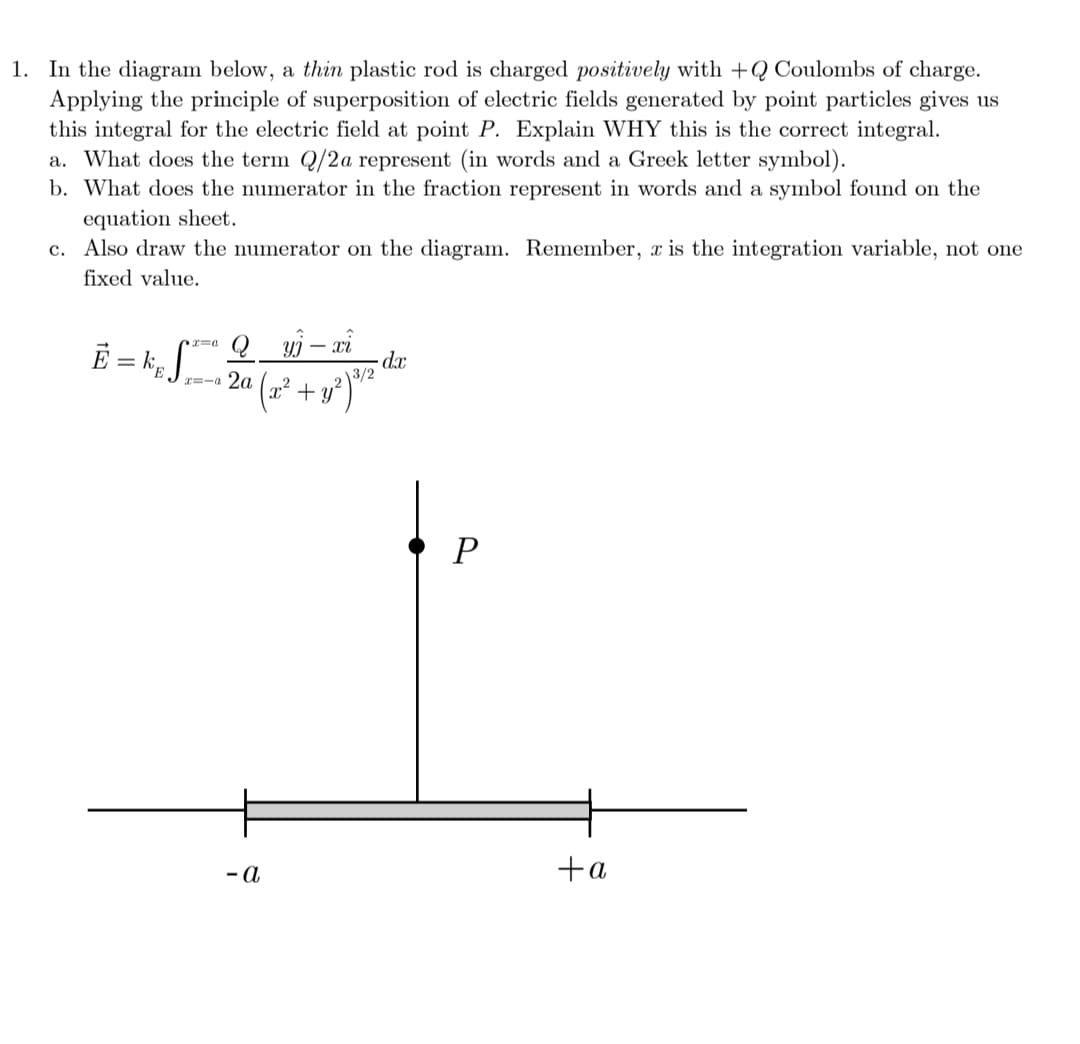1. In the diagram below, a thin plastic rod is charged positively with +Q Coulombs of charge. Applying the principle of superposition of electric fields generated by point particles gives us this integral for the electric field at point P. Explain WHY this is the correct integral. a. What does the term Q/2a represent (in words and a Greek letter symbol). b. What does the numerator in the fraction represent in words and a symbol found on the equation sheet. c. Also draw the numerator on the diagram. Remember, r is the integration variable, not one fixed value.
1. In the diagram below, a thin plastic rod is charged positively with +Q Coulombs of charge. Applying the principle of superposition of electric fields generated by point particles gives us this integral for the electric field at point P. Explain WHY this is the correct integral. a. What does the term Q/2a represent (in words and a Greek letter symbol). b. What does the numerator in the fraction represent in words and a symbol found on the equation sheet. c. Also draw the numerator on the diagram. Remember, r is the integration variable, not one fixed value.
Related questions
Question

Transcribed Image Text:1. In the diagram below, a thin plastic rod is charged positively with +Q Coulombs of charge.
Applying the principle of superposition of electric fields generated by point particles gives us
this integral for the electric field at point P. Explain WHY this is the correct integral.
a. What does the term Q/2a represent (in words and a Greek letter symbol).
b. What does the numerator in the fraction represent in words and a symbol found on the
equation sheet.
c. Also draw the numerator on the diagram. Remember, x is the integration variable, not one
fixed value.
x=0
É = kg √ - 2a
Qyj-xi
2.²
+ y²
- a
3/2
dx
P
+a
Expert Solution
This question has been solved!
Explore an expertly crafted, step-by-step solution for a thorough understanding of key concepts.
Step by step
Solved in 4 steps with 1 images
